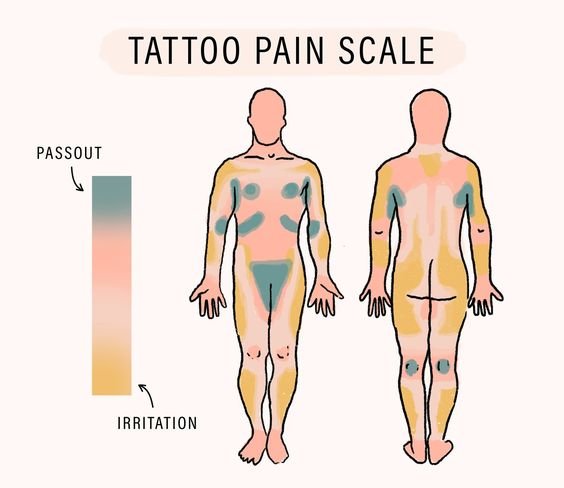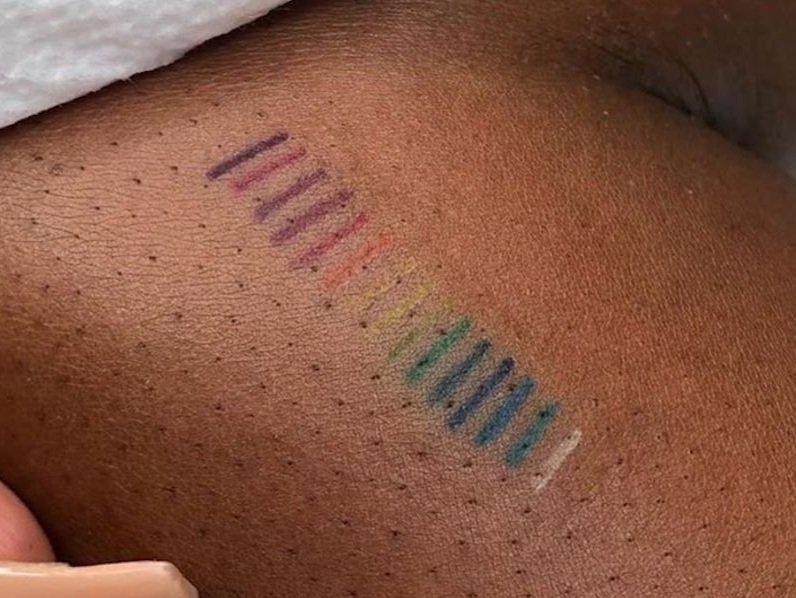Tattoo 101—Everything You Need to Know Before You Get Tatted Up
So, you want to join in with the cool kids and get some ink? Whether you're freshly 18 or going on 65, getting your first tattoo can be daunting and confusing, but also an amazing experience. On the surface, it may seem quite simple to get a tattoo, but there are quite a few tips and tricks to note before getting tatted up.
Source: Medium
Tattoo Basics
Believe it or not, there are dozens of different things to consider when it comes to the type of tattoo you may want.
Placement:
Tattoos—as you may have guessed—can be quite painful, and placement has a lot to do with it. When deciding where you want your tattoo, knowing which areas are more painful can help you determine how much of that pain you want to experience.
Source: Pinterest
This article by Inked Magazine points out the top ten most painful spots to get your tattoo.
Though a placement may be seen as painful, don’t let it detour you from getting the tattoo you really want. When it comes to pain, everyone’s body is different, and some placements that are painful for one person can be mild for another. Hey, at the end of the day, what’s a bit of pain for a kick-ass tattoo that is in a spot you love?
Sizing:
The size of your ink also contributes to what kind of tattoo you may want. A rule of thumb for tattoo sizing is the smaller the tattoo, the less detailed the design will have to be. The main reason for this is to prevent the tattoo from mudding as it fades later on.
Color:
An aspect of tattooing that is often overlooked is the color of the ink. Having a colored tattoo may be a fun concept, but it can actually be a tricky thing.
Source: Inside Out
It may be beneficial to get a color test before your first tattoo, as certain skin tones take to different ink colors in different ways. By getting a test strip, you can see just how each color will react to your skin (plus, it's kind of cute).
Another thing to take into account is how quickly colored tattoos will fade, especially the lighter tones. Not-to-mention they’re a bit more painful, as they require a lot more passes of the tattoo machine to be opaque and bright.
Style:
The last, but most important, detail to take into account with your tattoo is which style you’d like your ink. From line work to new school, there are dozens of different tattooing techniques out there to get a feel for and find which fits your personality. Inked Magazine wrote a tattoo style guide that’ll give you an idea of some of the different styles out there.
Research Your Artist
Now that you’ve settled on what kind of tattoo you’d like, it's time to find your artist.
As we talked about before, there are dozens of different tattoo styles out there to choose from and because of this, artists tend to take to a particular style. An artist’s specialty is a crucial detail to take into account when choosing the right one for your design, as it ensures that your tattoo will be done to the best of its ability.
The majority of tattoo artists these days have social media profiles that show off their work so you can get a feel for what their preferred style is. If you are still struggling to find an artist that matches your style, use this article by Mic to get a step-by-step guide to finding the right artist for you.
Source: @mclametattoos on Instagram
The Big Day
Ok—so you have picked out your design and found your desired tattoo artist. Now it’s time to make that appointment to get your tattoo but, before you head to the tattoo shop, there's a bit of etiquette you may want to know for the big day.
On the day of your first tattoo, there is one very important thing you must do: EAT. Nourishing yourself is always important, but when it comes to tattoos, it can have a large impact on the art turns out. Eating certain foods—in combination with tons of water—can make your skin more firm as well as make you bleed less. Plus, you’re less likely to pass out.
When you go to your appointment, try to show up around 30 minutes before your actual set time. This allows you and your artist to discuss your design in person and also opens the opportunity to start on your tattoo early.
Source: Pinterest
During the magical moment of your first tat, it might seem intimidating to speak up about any questions or concerns you may have. However, you should not be afraid to advocate for your needs. Do you need a break? Speak up! Do you want the stencil of your design moved over an inch? Speak up! At the end of the day, this is your tattoo, so you have a voice for what goes on.
After your beautiful new ink is done, don’t forget to tip your artist. In the tattooing world, it's customary to tip your artist around 25% on top of the tattoo’s total price. The website Wild Tattoo Art breaks down everything you need to know about tipping and why it is such an important part of tattooing.
The Ever-important After Care
Congratulations, you’re officially inked. Now comes the admittedly boring part of tattoos—aftercare. While dull in comparison to the rest of the process, when done right, aftercare can ensure that your tattoo heals and looks the best it possibly can.
Depending on the size and location, your tattoo can take anywhere from two to six weeks to fully heal, and aftercare can drastically aid its recovery. Not only does it help prevent infection, aftercare ensures that the tattoo stays moisturized and doesn't scar.
One warning we’ll give you about healing is that the tattoo will get itchy, like, very itchy. As the skin begins to break and repair itself, your tattoo will start to get itchy as it heals. While it may seem enticing to scratch it, don’t. If you scratch the tattoo, you run the risk of lifting the actual ink from your tattoo as it heals (from personal experience, it's devastating).
Products:
The main goal of aftercare products is to disinfect your tattoo and lock in moisture. There are quite a few products that can aid in the healing process of your tattoo but here are a few trusty products that are also pretty affordable.
Source: Amazon
Disinfecting Soap: You can grab this anti-bacterial soap from Dial in almost any convenient store and is sure to have your tattoo nice and clean. Wash your tattoo with this at least three times a day.
Source: Amazon
Aquaphor: This healing ointment is perfect for keeping your tattoo’s moisture locked in and is available at all pharmacies. You can apply a very thin layer of this ointment on your tattoo after you wash it, as well as any time your tattoo is dry.
Now that you have a grasp on all of the essentials of getting a tattoo, there is one last—and perhaps most important—warning you have to know. Once you get one tattoo, it becomes a lifelong addiction—you won't be able to stop.
Do you have any tattooing tips? Comment Below.







